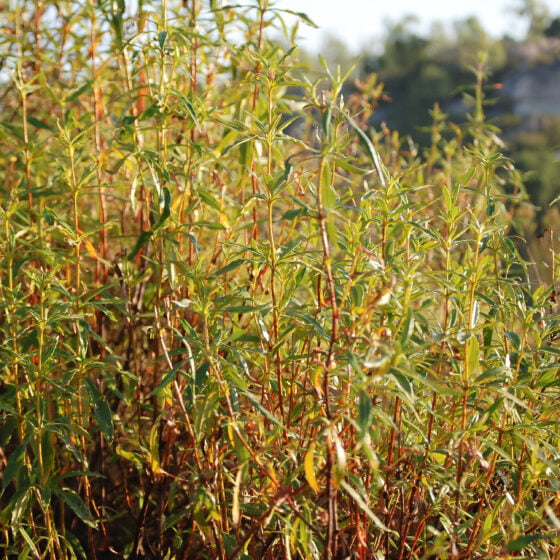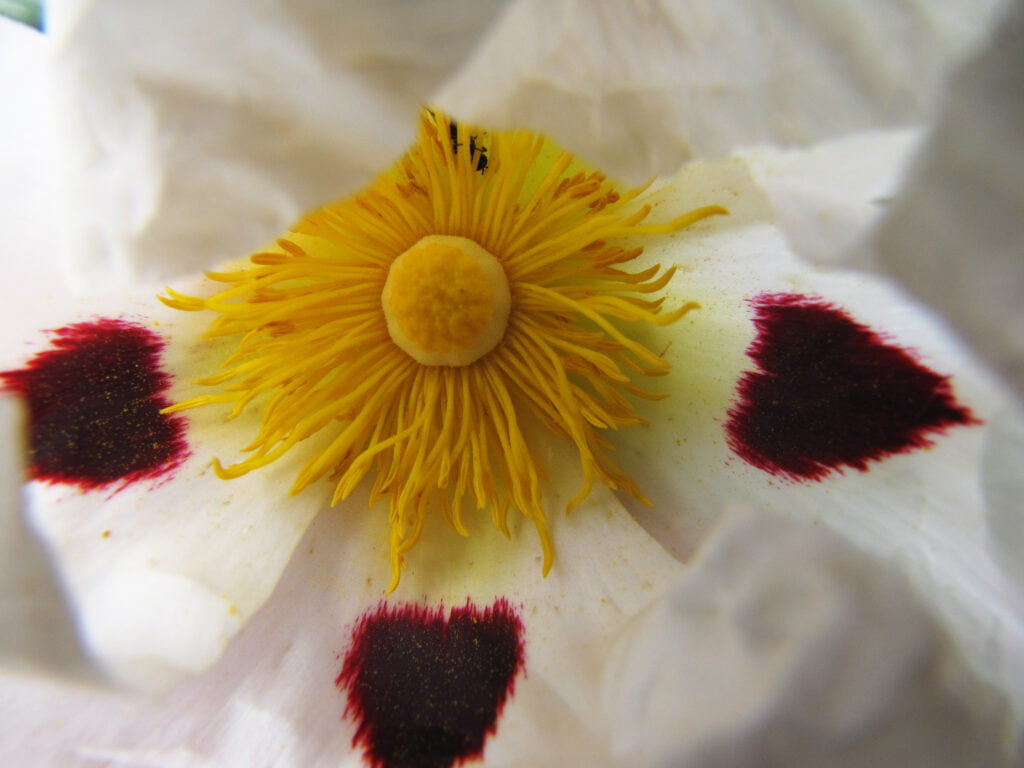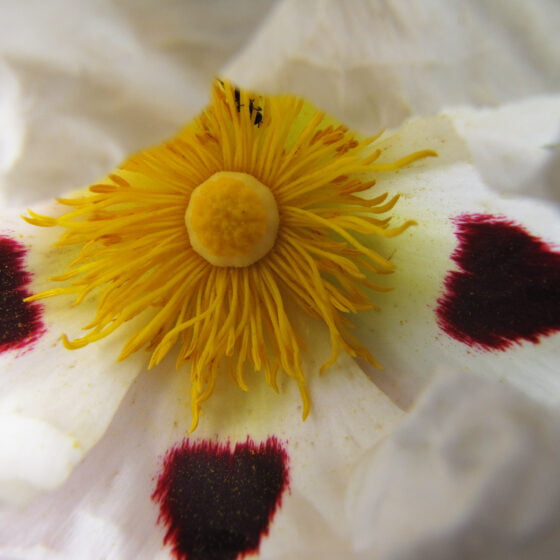
Cistus Spain
Cistus ladaniferus var. beta maculata
General data
Harvest Calendar
- J
- F
- M
- A
- M
- J
- J
- A
- S
- O
- N
- D
Product details Our added value
We harvest cistus from areas that are mainly located in the hills of the Sierra Norte Natural Park in Spain, which has been a designated UNESCO Biosphere Reserve in Las Dehesas de Sierra Morena since 2002. The production plant, opened in 1974 and acquired by our company in 1991, is located as close as possible to these cistus areas, which limits our ecological footprint.
The cistus absolute is transformed in our facilities.
With regard to cutting and harvesting, we select and create plough strips so that the cistus can regenerate in areas where it is too old, allowing new cistus branches to develop. During harvesting, the cutting height of the cistus branches is controlled to ensure the regeneration of the resource from one year to the next.
Since it is a wild plant, the price can vary for many reasons that depend mainly on the weather and the age of the plant. We guarantee a minimum remuneration to all collectors or suppliers, based on operating costs, in order to ensure a profitable income. All our collectors are experienced pickers, employed under seasonal contracts, as cistus can only be harvested for 3 to 4 months. They all harvest on public land, where our company has obtained permits and licences from the environmental authorities in Spain.
Fragrance side
The absolute keeps the same olfactory profile as the essential oil. It is very clean, soft, less honeyed.
It can be associated with everything, like a flower, in an eau de Cologne, or can replace synthetic musks to envelop the perfume and make it deeper.
Less used than the essential oil, the cistus absolute is mainly used as a fixative. It can also be used to bring amber and leathery notes to chypre accords. The absolute is also used in combination with woody and ambery accords.
About
Cistus ladaniferus var. beta maculatus is the only species of cistus to be used in perfumery. Present all around the Mediterranean, cistus is particularly abundant in Andalusia where the arid climate is favourable to its development. It flowers from April to June in the form of large white flowers with ephemeral purple macules. At the end of flowering, between May and June, new branches appear. They will then produce a gum, called labdanum, whose intoxicating smell fills the air of the hills.
Until the beginning of the 20th century, the gum was harvested directly from the fields by letting goats pass through. Their fleece would fill with gum as soon as they walked by the shrubs. In the 20th century, gum was harvested by whipping the branches with rakes of leather strips called Ladanisterion. The strips were then scraped with a knife to collect the gum. Today, the cistus branches are harvested by hand with sickles.
Manual cutting of the cistus branches begins in July, when they are gummed. Only the shoots of the year are harvested. Once cut, the twigs are gathered into 25 kg bundles and taken to the factory for processing.
For a good yield, good weather conditions are essential: if it rains too much during the harvest season, the plant’s resin will be “washed” and if it does not rain and the air is too dry, the rockrose will suffer from hydric stress, lose part of its leaves and produce less resin.
Our added value
We harvest cistus from areas that are mainly located in the hills of the Sierra Norte Natural Park in Spain, which has been a designated UNESCO Biosphere Reserve in Las Dehesas de Sierra Morena since 2002. The production plant, opened in 1974 and acquired by our company in 1991, is located as close as possible to these cistus areas, which limits our ecological footprint.
The cistus absolute is transformed in our facilities.
With regard to cutting and harvesting, we select and create plough strips so that the cistus can regenerate in areas where it is too old, allowing new cistus branches to develop. During harvesting, the cutting height of the cistus branches is controlled to ensure the regeneration of the resource from one year to the next.
Since it is a wild plant, the price can vary for many reasons that depend mainly on the weather and the age of the plant. We guarantee a minimum remuneration to all collectors or suppliers, based on operating costs, in order to ensure a profitable income. All our collectors are experienced pickers, employed under seasonal contracts, as cistus can only be harvested for 3 to 4 months. They all harvest on public land, where our company has obtained permits and licences from the environmental authorities in Spain.
Fragrance side
The absolute keeps the same olfactory profile as the essential oil. It is very clean, soft, less honeyed.
It can be associated with everything, like a flower, in an eau de Cologne, or can replace synthetic musks to envelop the perfume and make it deeper.
Less used than the essential oil, the cistus absolute is mainly used as a fixative. It can also be used to bring amber and leathery notes to chypre accords. The absolute is also used in combination with woody and ambery accords.
About
Cistus ladaniferus var. beta maculatus is the only species of cistus to be used in perfumery. Present all around the Mediterranean, cistus is particularly abundant in Andalusia where the arid climate is favourable to its development. It flowers from April to June in the form of large white flowers with ephemeral purple macules. At the end of flowering, between May and June, new branches appear. They will then produce a gum, called labdanum, whose intoxicating smell fills the air of the hills.
Until the beginning of the 20th century, the gum was harvested directly from the fields by letting goats pass through. Their fleece would fill with gum as soon as they walked by the shrubs. In the 20th century, gum was harvested by whipping the branches with rakes of leather strips called Ladanisterion. The strips were then scraped with a knife to collect the gum. Today, the cistus branches are harvested by hand with sickles.
Manual cutting of the cistus branches begins in July, when they are gummed. Only the shoots of the year are harvested. Once cut, the twigs are gathered into 25 kg bundles and taken to the factory for processing.
For a good yield, good weather conditions are essential: if it rains too much during the harvest season, the plant’s resin will be “washed” and if it does not rain and the air is too dry, the rockrose will suffer from hydric stress, lose part of its leaves and produce less resin.
Other type of extracts
(Ambery)


